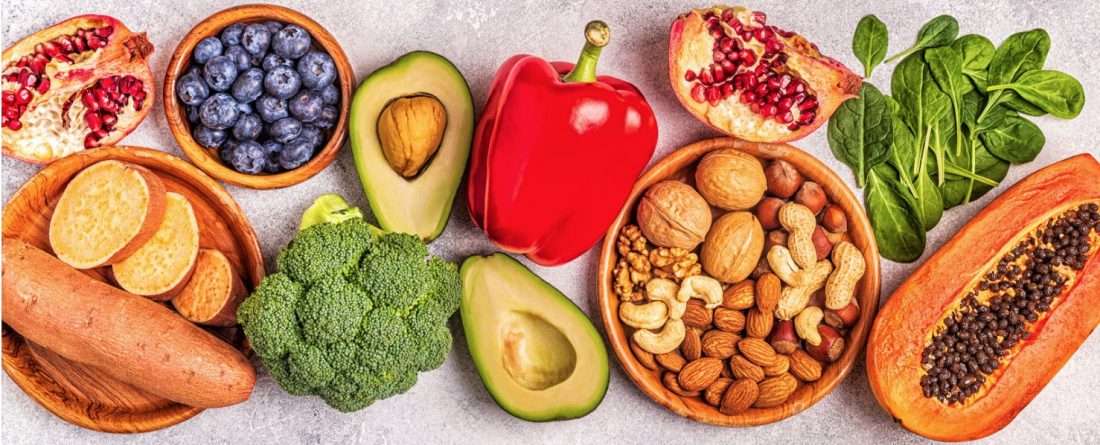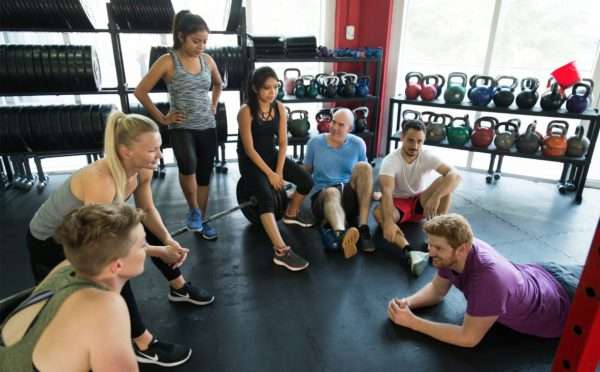March 2, 2014
Nothing is more devastating to an athlete than an injury. Whether chronic or as a result of a sudden mishap, the tears and frustration are often not from the physical pain of the injury, but from the grief and frustration associated with the possibility of not reaching whatever fitness/physique goals you’ve set for yourself. As athletes, we’re often obsessively focused individuals with an all-or-nothing mentality. And maintaining some balance and perspective during the early days of an injury is often replaced with a defeatist mentality. But don’t despair; all is not lost. I know it’s easier said than done, I’ve been there – when it only seems logical that if I can’t be lifting my personal bests or I can’t be sprinting full-out, then I might as well have a Walking Dead marathon and devour entire bags of chips and m&m’s! (yup, true story)
Aside from the obvious medical treatments and therapies that you may follow to heal your injury as effectively and quickly as possible, there are several other simple things you can start doing right now at home to promote healing and get you back to the gym sooner than later.
MAINTAIN TRAINING
Whatever you do, DO NOT entirely give up your training. A few days off (or even a week or two) may be needed depending on the nature of the injury, and to let the nervous system relax and allow for great energy needs to be directed towards healing. However, there are several reasons that maintaining modified training will support recovery.
First modification is to focus on another body part or component of training. Find another outlet for your obsessive focusing! If you’ve injured your shoulder or other muscle group of the upper body, use your recovery period as an opportunity to hit hard on legs, and vice versa. If you need to back off the strength training, find some cardio that you can do and burn those calories! Make it a cardio training phase. Most always, there is some muscle group, some body part, some component of training – whether cardiovascular, core work, flexibility training – that is okay to continuing working on.
In many cases, you can even continue to work the same general part of the body, just do single-side –-> that is, if it’s a shoulder injury, you need not forgo shoulder workouts for 4 weeks while it heals. Instead, simply work your good shoulder. We often make the assumption that working a single-side will create muscle imbalances and therefore, we avoid it. Sure, perhaps this could happen if you’re doing that for several months and you’re lifting quite heavy! But to do it for 4-6 weeks of the acute injury phase, the potential gains that may contribute to an imbalance pale in comparison to the benefits you gain from continuing with this training style. Here’s why:
- continuing to tear down muscle fibres (by stressing them in a workout) creates a cascade of hormonal changes in the body that will actually benefit your injured tissues! ie: an increase in growth hormone and testosterone occur when you stress muscles during a workout. Those building hormones will promote muscle growth everywhere in the body, not just in the working muscle group – so they’ll help rebuild and heal your injured tissues as well – WIN WIN 👊🏼
- continuing to train hard increases circulation, thereby sending oxygen and nutrient rich blood to all parts of the body, including those damaged tissues where your injury is –> promoting quicker healing
- continuing to train fuels your athlete’s laser-sharp focus and feeds the soul!
When you’re injured, RE-FOCUS. Create a new plan for yourself, a new mission, and conquer it! In the end, not only will it help with your psychological health throughout the duration of your injury recovery, but will most likely make you an all-round better athlete for it.
Check out how Yvette re-focused after a major calf muscle tear.
.
NURTURE YOURSELF SOCIALLY
Whether you are a part of a team, go to regular classes of some sort, or train by yourself at a gym, your training is almost always tied in to your social love-bucket. It’s where we connect, see and be seen, and feel part of something. It’s important you maintain this while recovering from injury. Talk to the class instructors, the coaches, or your trainer about modifying things for you so that you may still attend and be part of the larger group. Perhaps there’s not much you can do, except be in the same space gently riding the stationary bike with your one good leg while you watch the others. Do it! Staying connected will reduce the common doldrums we often experience with injury, and the more fulfilled you are socially and emotionally, the speedier your recovery will be.
Use this down time to catch up with friends and family. We all lead busy lives, especially when you add in our dedication to training and the extra time it takes in life. Now is a great time to reconnect over coffee dates or movie nights.
NURTURE YOUR MIND & SPIRIT
Likewise, if you’re at all like I am you’re a mover and sedentary tasks seem to pile up! If you need to be a little less active right now while your injury heals, catch-up on desk work, books you’ve been meaning to read, filing, or other sedentary tasks. Getting caught up on the mundane stuff outside of the gym will ease stress you may have been carrying over it, and free up space in your mind for planning your recovery strategies. Try stimulating yourself intellectually by doing things that you normally don’t sit still long enough to do (yeah, I got you pegged you high achiever you)! Take an online course or watch some podcasts on a favorite topic. I started Rosetta Stone Spanish back a few years ago during the acute stage of a back injury. So some good actually came of my back injury ☺
Your workouts are your stress release, your time to vent some steam. So find other ways right now to relax and unwind. Hot bath, a massage, meditate, maybe a little retail therapy – get some new workout clothes to rock when you’re back at the gym! Do things that will make you feel pampered and indulged.

NUTRITION
Clean, nutritious eating will help so much with injury healing! The foods we eat play a huge role in keeping our mood and outlook positive through injury-recovery, but also in our body’s ability to heal and rebuild damaged tissues.
Adjust your overall caloric intake for the change in energy expenditure (you likely won’t be burning as much while you recover), but now is not the time to diet and restrict too much either. It’s crucial to maintain adequate caloric intake so your body can meet the energy requirements needed to support repair. We can help you figure out your nutritional needs while recovering, get in touch!
Avoid refined sugar as much as possible.
Sugar greatly diminishes the immune system almost immediately upon consumption. In fact, studies show that immune cells can be reduced by up to 40% within 20 minutes of consuming the equivalent of the sugar in a can of pop!
Avoid or minimize alcohol intake.
Likewise, alcohol not only suppresses the immune system, but also impairs the body’s ability to absorb nutrients, vitamins and minerals that are crucial to your body’s ability to heal right now.
Maintain adequate protein and increase your BCAAs
The amino acids in protein help promote the healing of muscle tissue, bones and skin.
Further, healing is largely dependent on blood supply. The stronger the blood supply, the faster you can heal because blood supplies the injured area with important oxygen and nutrients which help the injury heal. Optimize the quality of your blood nutrients by eating high value, whole foods; and optimize circulation of that quality blood supply naturally with regular movement. If you like spicy foods, cayenne pepper also helps promote circulation in the body.
Certain foods can promote inflammation within the body while others have an anti-inflammatory effect. Avoid inflammation promoting foods such as fried foods, processed white flour, sugar, and alcohol.
ANTI-INFLAMMATORY FOODS:
Dark, leafy greens. Dark, leafy greens like spinach and kale are packed with flavonoids, which may reduce inflammation in the brain. Good sources include spinach, kale, soybeans, berries, and tea.
Pineapple. This tropical fruit contains the enzyme bromelain, which can help treat muscle injuries like sprains and strains. Add pineapple to a smoothie or salad.
Flaxseed. Flaxseed is packed with omega-3 fatty acids, which can help reduce inflammation. Grind flaxseed to release the oils, and then add a spoonful of it to your salad, oatmeal, or yogurt.
Carrots . Orange carrots are rich in carotenoids, a group of phytochemicals that help protect cells from free radicals, boost immunity, and help regulate inflammation. Other carotenoid-rich foods include apricots, tomatoes, sweet potatoes, squash, and pumpkin.
Cinnamon. Research has shown that cinnamon not only reduces inflammation but also fights bacteria, assists with blood sugar control, and enhances brain function. Sprinkle cinnamon over yogurt, cereal, or oatmeal, or add it to a smoothie.
Ginger. Ginger contains several anti-inflammatory compounds called gingerols, which may relieve joint pain, prevent free radical damage, and increase immunity. Steep a couple of slices of ginger in hot water for ginger tea, or add fresh ginger to a smoothie.
Onions. Try using onions as a base for soups, sauces, and stir-fries. Similar foods with anti-inflammatory benefits include garlic, leeks, and chives.
Walnuts. Walnuts are loaded with anti-inflammatory omega-3 fatty acids. Top a salad with a handful of walnuts or eat raw walnuts as a snack.
Turmeric. A mustard-yellow spice from Asia, turmeric gets its coloring from a compound called curcumin. Researcher shows that curcumin can improve chronic pain by suppressing inflammatory chemicals in the body. Make a homemade curry with turmeric or mix it into other recipes once or twice a week.
Other nutrients can help too:
• Multivitamin: crucial, helps prevent vitamin and mineral deficiencies. Aids tissue repair.
• Zinc: important in tissue repair.
• Vitamin C with Bioflavonoids: an important antioxidant which helps tissue repair and growth.
• Manganese: strengthens wounded tendons and ligaments.
• EFAs (essential fatty acids): speeds up recovery and promotes cellular health.
• Vitamin B helps reduce injury related stress.
• Glucosamine Sulfate helps strengthen and form tendons cartilage, ligaments and joint fluid.
I getchu, my friend. Injuries suck. But with evidence-based tools, a little planning (and the support of a coach – moi 😁) you can boost your body’s ability to heal faster and come back maybe even in better shape than you were before. How cool would that be?!
Holistic & Nutritional Injury Recovery
The entire contents of this website are based upon the opinions of Build Holistic Nutrition. Please note that Build Nutrition is not a dietitian, physician, pharmacist or other licensed healthcare professional. The information on this website is NOT intended as medical advice, nor is it intended to replace the care of a qualified health care professional. This content is not intended to diagnose or treat any diseases. Always consult with your primary care physician or licensed healthcare provider for all diagnosis and treatment of any diseases or conditions, for medications or medical advice, as well as before changing your health care regimen.
© BUILD NUTRITION 2025. ALL RIGHTS RESERVED. PRIVACY POLICY
Go ahead, creep us on social. You know you want to!

